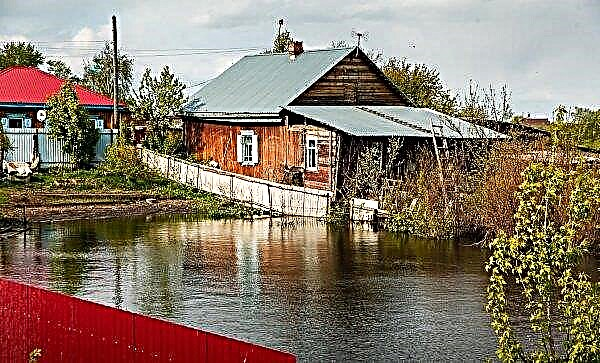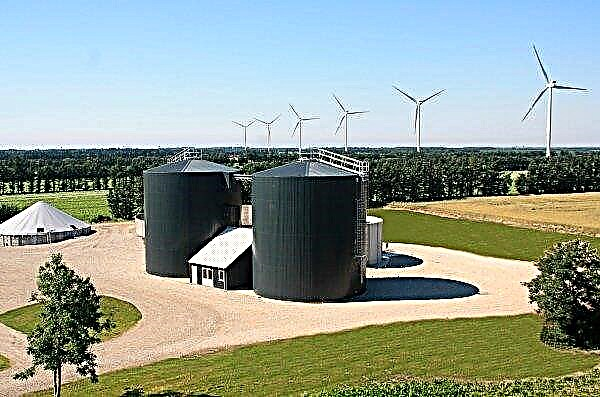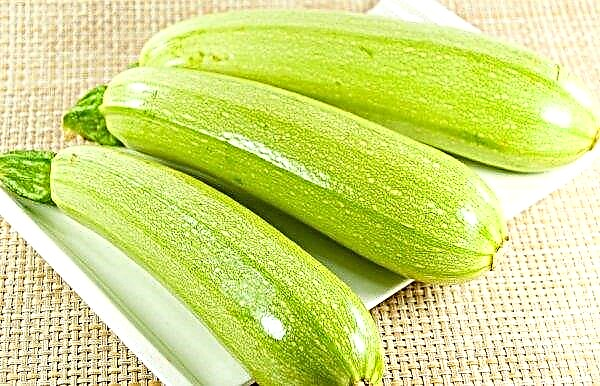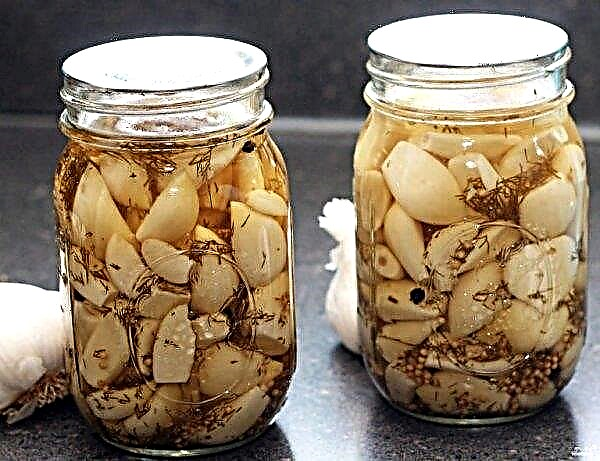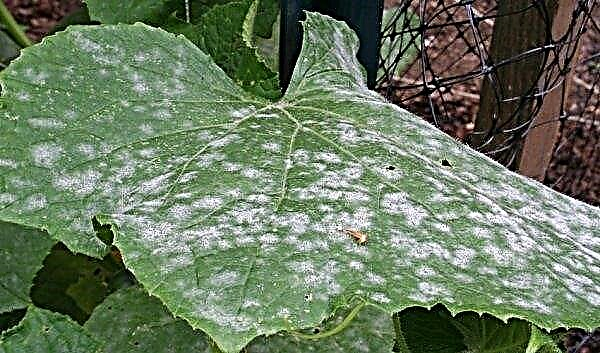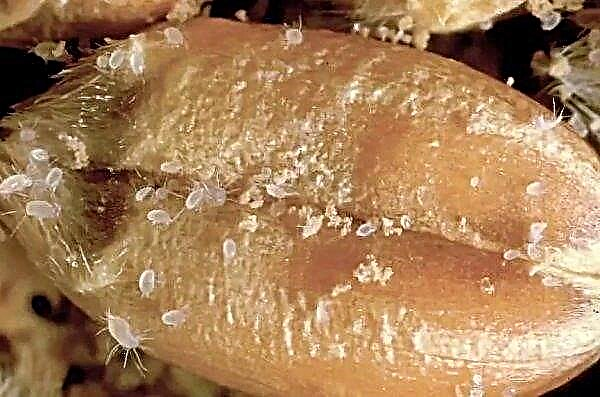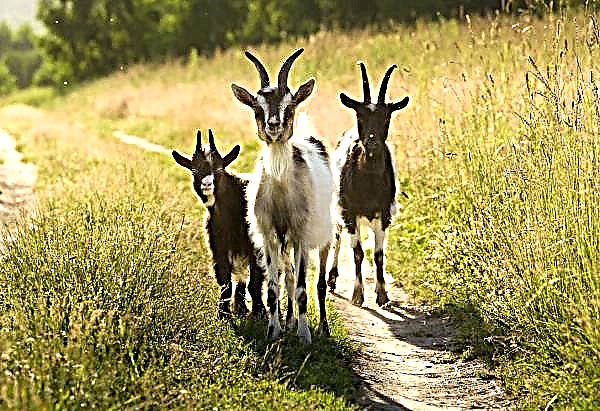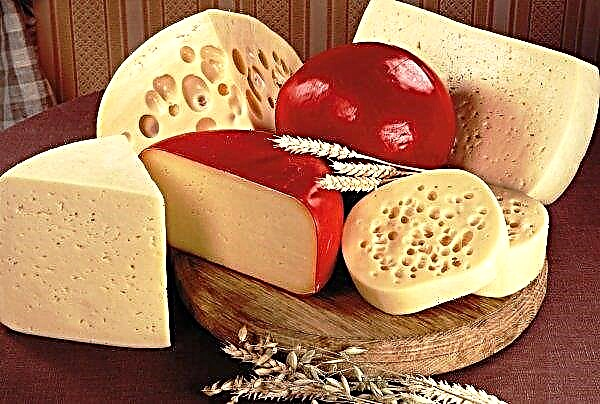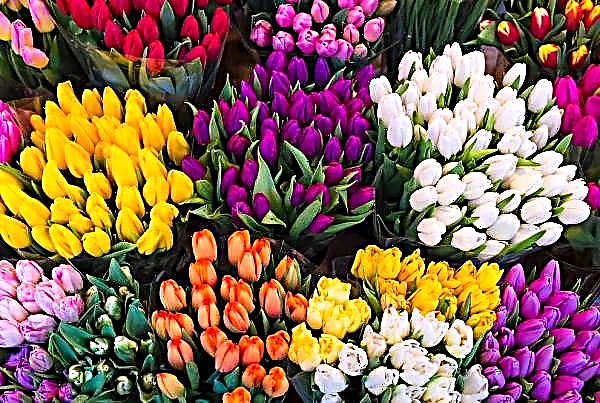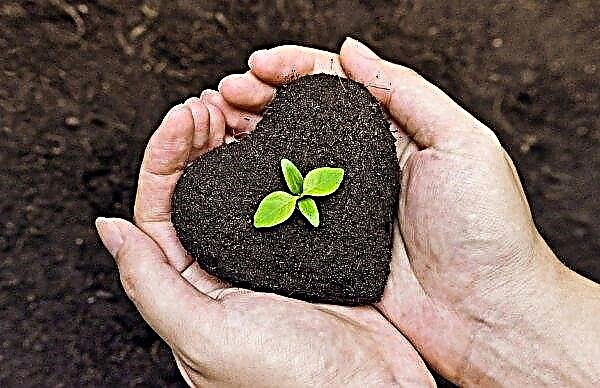Potato is one of the most important foodstuffs of mankind, therefore its new varieties with improved characteristics are regularly selected. The new table variety Kamensky is a Russian development and is characterized by high productivity, drought tolerance and is not affected by the Colorado potato beetle.
Characterization and description of the variety
This potato with high taste is selected in the Federal State Budget Scientific Institution "Ural Research Institute of Agriculture" and was entered in the state register of the Russian Federation in 2009. It is allowed for cultivation in three regions of the country:
- Volga-Vyatka;
- West Siberian;
- Ural.
Did you know? Potato belongs to the Solanaceae family, which includes many garden crops that do not look like each other: tomato, pepper, eggplant and even tobacco.
Appearance of tubers and bushes
Oval tubers have a red peel with roughness, middle eyes with a shallow bedding. Creamy flesh with a high starch content (up to 18.9%) and excellent taste. The mass of one potato is 100–130 g, individual specimens reach 180 g. A straight bush with several stems, compact, well developed. The leaves are saturated green, large, stiff, with wavy edges. Corolla straight, large, with red-violet flowers uneven in color.
Ripening time
Depending on climatic conditions, care, soil and the region, this early ripe potato can produce a crop from 50 to 60 days. In light, well-fertilized soil, this can happen earlier, and in heavy soil a little later.
Did you know? Not every type of potato can be bought at the supermarket or in the market. La Bonnotte, which is grown on the French Mediterranean island of Noirmoutier, has such a delicate taste that the cost of a kilogram of this delicacy is about 500 euros.
Productivity
Kamensky is a high-yielding and large-fruited variety. In a good year, he is able to bring up to 550 centners per hectare. On one bush, 10 to 25 tubers can form.
Disease resistance
Breeders managed to achieve the resistance of the variety to the main pest - the Colorado potato beetle. But the golden nematode can harm the plant. Of the diseases, the culture has an average resistance to late blight.
Frost resistance
With early planting, possible frosts can damage and even destroy delicate sprouts. The stems become glassy at low temperature and then die. Kamensky has some frost resistance even to Ural frosts, but a prolonged decrease in temperature can be detrimental to young plants.
Advantages and disadvantages of the variety
- The positive qualities are as follows:
- precocity
- drought tolerance;
- frost resistance;
- productivity;
- high taste;
- resistance to the Colorado potato beetle;
- transportability.
- The variety has practically no negative characteristics. It can only be attributed to
- low stubbornness inherent in table varieties, and susceptibility to attack of nematodes.
Features of planting and care
Kamensky is planted in mid-April, when the soil temperature stabilizes at positive levels.
Important! With the help of preparation for planting in tubers, biological growth processes are launched, which will give strong stems and healthy fruits.
Selection of planting material
The criteria for selecting tubers for planting are as follows:
- many shallow eyes;
- flat surface without damage;
- average size and weight (50–80 g);
- All vegetables must be of the same variety.

Tuber preparation
Potato can be planted in the ground without preparation, which is usually done by summer residents. But you can prepare planting material, which will help him in growth and fruiting. Preparation of planting material begins a month before placement in the ground. For germination, potatoes are laid in 1-2 layers on the floor or in boxes in places with enough light. If the boxes are stacked on top of each other, they need to be swapped regularly. To awaken the eyes, it is necessary to keep the material at a temperature of +18 ... + 20 ° C for two weeks. In the future, in order to harden the sprouts and reduce their growth rate, it is necessary to lower the temperature to +10 ... + 14 ° ST In some cases, it is not possible to prepare planting material in advance. Here, quick methods of initiating growth come to the rescue - drying and warming. In the first case, the potatoes are kept in a warm room for 1-2 weeks until the sprouts or their primordia appear; in the second case, they are artificially heated for at least 3-4 days.
To awaken the eyes, it is necessary to keep the material at a temperature of +18 ... + 20 ° C for two weeks. In the future, in order to harden the sprouts and reduce their growth rate, it is necessary to lower the temperature to +10 ... + 14 ° ST In some cases, it is not possible to prepare planting material in advance. Here, quick methods of initiating growth come to the rescue - drying and warming. In the first case, the potatoes are kept in a warm room for 1-2 weeks until the sprouts or their primordia appear; in the second case, they are artificially heated for at least 3-4 days.
Soil preparation
Potatoes produce good crops in “breathing” soils, which should not be in lowlands prone to waterlogging. The loosest sandy loam lands are ideal for growing this vegetable. Preparation of soil for planting is done in the following order:
Preparation of soil for planting is done in the following order:
- organic fertilizers are applied in the fall;
- in the spring produce cultivation of 12-15 cm without a coup;
- Before landing, the site is dug up to the depth of the bayonet of a shovel.
Potato planting scheme
Material is planted in the prepared soil through 35–40 cm. One medium or two small tubers are placed in the dug holes. A variant with cutting in half or four parts of large potatoes is possible. When shoveling or mechanized planting, the aisles are 70–80 cm. Such a gap is made for access to each bush and the opportunity to develop the underground part of the plant.
Watering and fertilizer
Potatoes do not require a large amount of moisture, but during its growth, you can irrigate at the most important points:
- when shoots appear;
- when the first flower buds appear;
- after flowering.
Each watering has its own meaning: the first stimulates the stems to grow, the second activates the splendor of flowering and tuberization, the third prevents the tops from drying out quickly and stop feeding the root system. The usual watering rate is 50 liters per 1 m². Water temperature - not lower than + 23 ° С, and it should be soft. Watering is done in the evening at sunset or in the morning before sunrise. You need to water in the aisles, under the stems, but not on the foliage.
Top dressing, like watering, is also carried out in three stages:
- 20-30 days after planting - A tablespoon of urea (or bird droppings) in a bucket of water of 0.5 l under the bush;
- when the first buds appear - a glass of wood ash in a bucket of water of 0.5 l under the bush;
- after flowering - 2 tbsp. tablespoons of superphosphate in a bucket of water of 0.5 l under the bush.
Important! With the good development of the bushes, fertilizer after flowering can not be done - the plants themselves will "figure out" and give a good harvest.
Loosening and weeding from weeds
After watering or raining, potatoes need to be spudded so that a crust does not form, trapping water and preventing the soil from breathing. The ground is neatly picked up with a chopper or shovel under the stems to retain moisture in the root zone. If this is not done, the plant will not receive its portion of moisture and may, in turn, not get enough of it for tubers developing underground. Weeding is also a mandatory procedure for growing potatoes. All weeds “excellent” deprive the soil of minerals and moisture, which affects the quality of future potatoes. To prevent this, weeds mercilessly weed out and removed from the site.
If this is not done, the plant will not receive its portion of moisture and may, in turn, not get enough of it for tubers developing underground. Weeding is also a mandatory procedure for growing potatoes. All weeds “excellent” deprive the soil of minerals and moisture, which affects the quality of future potatoes. To prevent this, weeds mercilessly weed out and removed from the site.
Prevention of diseases and pests of the variety
Diseases and pests bypass Kamensky, as he was specially selected to be able to withstand them. Tubers of this variety, like any potato, can rot with excessive watering, stagnant water. This can also happen due to rains, so you need to make sure that water does not accumulate in the aisles. The variety is very resistant to cancer, various types of mosaics, foliage twisting.
But it is susceptible to a golden cyst-forming nematode, which is able to destroy part of the crop - up to 90%. For the prevention and control of this parasite, the Nematorin insecticide is used, which can be added to the holes or beds during planting or sprinkled under the stems when pests appear. It also helps fight wireworms.
Harvesting and Storage
Like any kind of potato, Kamensky must be harvested very carefully so as not to damage the fruits. Given its productivity, you need to use the pitchfork and do a digging in the middle between the bushes, dumping a layer of land with tubers in the aisle. Selected fruits are not placed in wooden or plastic boxes to the very top, so that you can stack them.
Table early ripening variety is not subject to long-term storage, but the “lifespan” of tubers can be extended if the boxes are placed in a cool dry cellar. In this case, the vegetables will remain for 2-3 months, especially if they are sorted weekly. It’s also good to keep potatoes in the vegetable compartment of the refrigerator.
Kamensky potato is a representative of a new level of control of the Colorado potato beetle - it is not necessary to create insecticides, but rather to select a variety with properties that interfere with pests. At the same time, the potatoes are perfectly cooked, fried and baked and have great taste.

